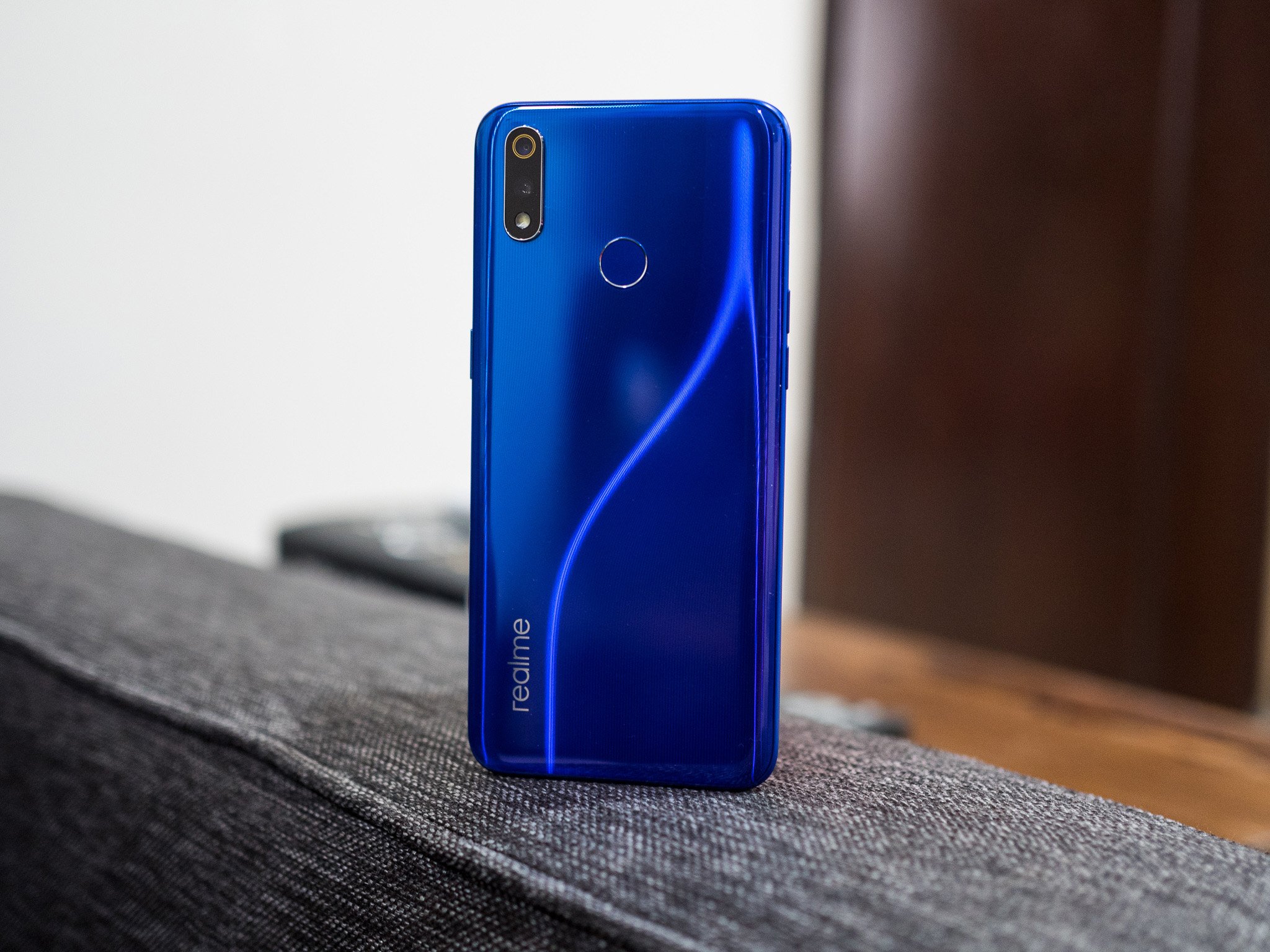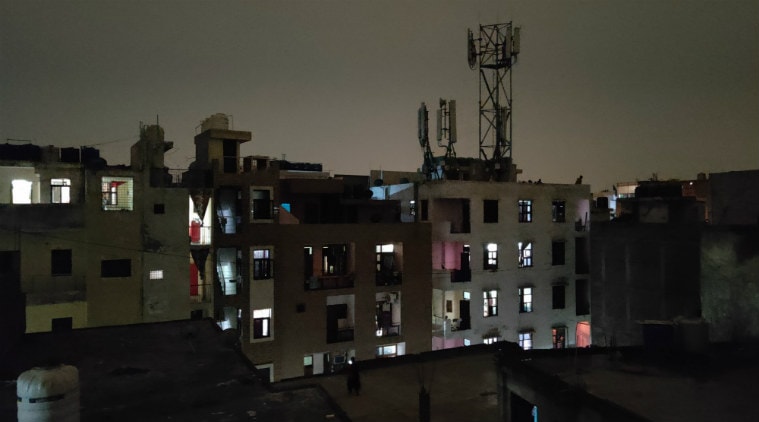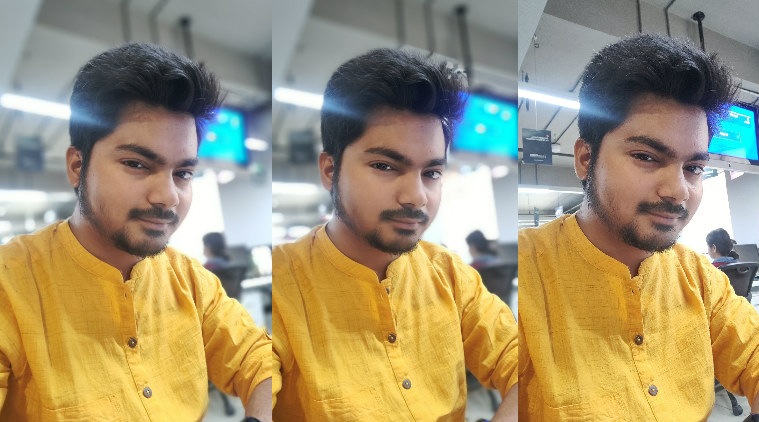
Realme 3 Pro has been launched in India with Snapdragon 710 processor, 16MP+5MP dual rear camera, and 4,045mAh battery with VOOC 3.0 flash charge for a starting price of Rs 13,999.
Realme has a brand has managed to carve a space for itself, despite being just a year old. Phones like the Realme 2 Pro, Realme 1, and Realme U1 have managed to impress in the budget segment, which is one of the most competitive in the market. In fact, Realme has made it unabashedly clear that it is targeting the number one player in the market, Xiaomi.
With the latest phone Realme 3 Pro, the company is very clear: This is a challenger for the newly launched Redmi Note 7 Pro. In fact, both phones are priced exactly the same, Realme 3 Pro and Redmi Note 7 Pro start at Rs 13,999. The higher variants of both these phones will cost Rs 16,999.

The gradient colourful look at the back of the purple and blue colour options of Realme 3 Pro make this phone appear very similar to the Redmi Note 7 Pro. But similarity is not the only factor that decides a phone’s success in India. So does Realme 3 Pro deliver on the tall promises it makes? Here’s our review of Realme 3 Pro and its performance.
Also see: 7 Most Surprising Things About the Samsung Galaxy Fold
Realme 3 Pro specifications: 6.3-inch FHD+ IPS display | 16MP+5MP dual rear camera | 25MP front camera | Qualcomm Snapdragon 710 processor | 4,045mAh battery | 4/6GB RAM | 64/128GB internal storage | ColorOS 6 based on Android 9 Pie
Realme 3 Pro price in India: Rs 13,999 for 4GB/64GB, and Rs 16,999 for 6GB/128GB.
Realme 3 Pro review: Design and display
At first look, the design of the Realme 3 Pro resembles closely to the previously launched Realme 3. However, there are minor changes. Drifting away from the unibody form factor, Realme 3 Pro features a sandwich design. The phone has an arc-shaped light effect 3D pattern at the back and its vibrant colour scheme stands out the most.
Realme 3 Pro first look: Not just a looker, it performs too
However, the extensive reflections cause slight discomfort to eyes under artificial lighting and the back attracts smudges easily. Also, Realme could have switched to a glass back, instead of a plastic one. After all, rival Redmi Note 7 Pro does sport a more premium glass design.

The back panel design texture is hard to capture on camera.
The Realme 3 Pro comes in three colours options – Carbon Gray, Nitro Blue (gradient) and Lightning Purple (gradient). I had the Lightning Purple unit in which the Blue colour from the left side transitions to the Purple colour to the right in reverse S-shape.
Realme 3 Pro has a bulky camera module which does not allow the phone to lie flat on its back. Realme 3 Pro retains a 3.5mm headset jack, but it lacks USB Type-C port. Instead, it uses the older micro-USB port for charging. The build of the Realme 3 Pro is compact and sits perfectly into the hands. The power button on right, volume rockers at left and a fingerprint sensor at the back are all within the reach.
On the front, it features a 6.3-inch screen with a dewdrop notch on the top. The front design lacks freshness. The Realme 3 Pro has thin bezels and a small chin. The phone handles the notch quite well and most of the time you would forget that it exists.
The 6.3-inch FHD+ IPS display of Realme 3 Pro works just fine. The viewing angles are good and the screen produces vivid colours. The text on the IPS display is visible under direct sunlight and you will not feel any difficulty in reading the caller name. However, if you use the phone under such circumstances for more than two minutes, it strains the eyes as you need to crank the brightness to full to actually see anything.
Realme 3 Pro review: Performance and software
The Realme 3 Pro is powered by Qualcomm Snapdragon 710 processor paired with Adreno 616 GPU. The Realme 3 Pro scores 1,53,749 on Antutu. This is lower compared to the Redmi Note 7 Pro, which in our testing scored 1,80,000 plus.
On GeekBench, the single-core score is 1447 and multi-core score is 5914, which is again lower compared to the competitor Redmi Note 7 Pro. But benchmarks are not the sole factor in determining performance.
The Realme 3 Pro’s Snapdragon 710 chipset takes the lead in graphics handling and better battery efficiency. In my usage, I did not face stutters or lags. To test the processor’s capability I opened multiple apps with more than 25 tabs in the Google Chrome. I could switch between the apps and Chrome tabs without any difficulty. The Realme 3 Pro performs smoothly and it plays graphics heavy games with ease.
I played Asphalt 9 and PUBG Mobile on high graphics settings on the Realme 3 Pro. I did not face any lag during the gameplay and there were no noticeable frame drops. During the gameplay, the phone temperature rises a little bit but never gets too hot.

The phone plays PUBG Mobile without any problem.
Realme 3 Pro runs ColorOS 6.0 based on Android 9 Pie. The device has Android Pie specific features like adaptive brightness, gesture navigation, app action etc. The UI offers a long list of gesture navigation options which is good to see. The ColorOS has improved a lot since I last reviewed a Realme device but it still needs a long way to go, as it still feels slow and cluttered.
Realme 3 Pro review: Camera
The Realme 3 Pro sports a 16MP Sony IMX519 sensor with f/1.7 aperture clubbed with a secondary 5MP sensor with f/2.4 aperture at the back. The rear camera setup takes great pictures in bright outdoors. The photos carry exceptional details and the HDR mode takes it to the next level. It clicks pleasing photos while staying close to natural colours.

Realme 3 Pro camera sample: Bright outdoor shot (Image has been resized for the web)
However, under low light conditions, the images lack details. Indoor shots taken in artificial lighting, do not carry much detail and the pictures turn out only okay.
The portrait mode on the rear camera is a hit and miss. While the colours and details are good, the edge detection often struggles to differentiate between the subject and the background. Realme has promised an OTA update to improve the bokeh effect.
There is also a 960fps Super slo-mo mode, which we received via OTA update days prior to the launch date of the phone. The feature works fine under bright light if not great.

Realme 3 Pro camera sample: Normal mode and Portrait mode (Image has been resized for the web)
The Chroma Boost mode in the Realme 3 Pro increases the saturation levels on the pictures. If you do not have the time to edit your photos before uploading to the social media, Chroma Boost is your shortcut. It makes dull scenes interesting but sometimes, it oversaturates the images.

Realme 3 Pro camera sample: Chroma Boost on (left) Chroma Boost off (right) (Image has been resized for the web)
The Nightscape mode on Reale 3 Pro works really well. The mode uses data from multiple images to form a single brighter image with more details and lesser noise.

Realme 3 Pro camera sample: Nightscape on (Image has been resized for the web)

The Ultra HD mode is hidden like an easter egg in the camera software. You have to tap the menu option under the camera app and select the Expert mode. Now, you will see the button to activate the Ultra HD mode on the top. The mode lets you click 64MP pictures where you can extensive zoom into the image, but it is just that.
The Realme 3 Pro uses multi-frame synthesis to form a 64MP image by synthesising multiple 16MP pictures. I expected the 64MP shot to carry more details but it was just the opposite. When you zoom into a 64MP image, all you see is blurred objects. Between the 16MP image and the 64MP image, the former is crispier and has better colours reproduction.

Realme 3 Pro camera sample: Photo taken from selfie camera in bright outdoor in HDR (Image has been resized for the web)
The selfie camera clicks good photos in outdoor lighting, but it also struggles under low light situations. While the colour reproduction and details are good in bright outdoors, it lacks both under artificial lighting. The portrait mode works better on the front camera, but it also struggles under low light situations.
Realme 3 Pro camera sample: Indoor shot– Portrait (left), Portrait AI (centre), Normal (right) (Image has been resized for the web)
The option to enable/disable the beauty mode on the selfie camera is a big plus for the Realme 3 Pro. It also allows setting the level of beautification.Realme 3 Pro review: Speaker, battery and other features
The speakers of the Realme 3 Pro impressed me a lot. The sound is clear, loud and audible even outdoors. There is nice depth to the speaker which is just brilliant for its price range.
The battery is another plus for the phone. The 4,045mAh battery lasts two days when the device is moderately used. On heavy usage like watching videos for four-to-five hours, browsing social media for two-to-three hours, listening to music and podcast for almost two hours, the phone still had 35 per cent battery left. The Realme 3 Pro supports 20W VOOC 3.0 fast charge which charged the phone from five to 98 per cent in just 1 hour and 10 minutes.
The fingerprint sensor at the back is as snappy as it can get. It never misses the mark and unlocks the device as soon as the finger touches the sensor. The face unlock feature on the device is spontaneous. It is so fast that some times, you will not even see the lock screen. Under low light, it takes time to work. However, if you want you can enable the “screen brightness compensation under dim surroundings” option, which I would not prefer.
Realme 3 Pro verdict
For a budget smartphone, Realme 3 Pro ticks all the right boxes. It has stylish design, great performance, nice speakers, a good camera, and a big battery with fast charging support. The phone tries to offer everything at an affordable price and it manages to do that just right.

إرسال تعليق